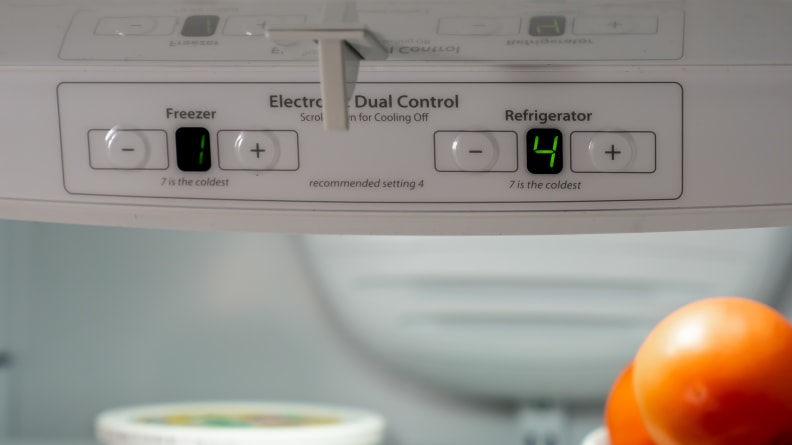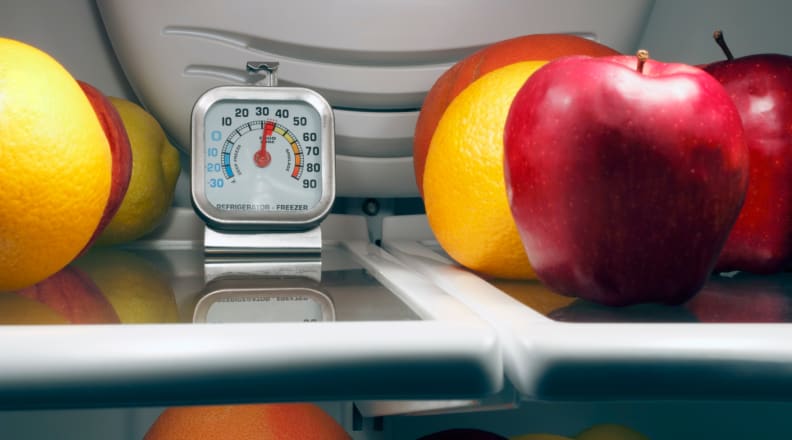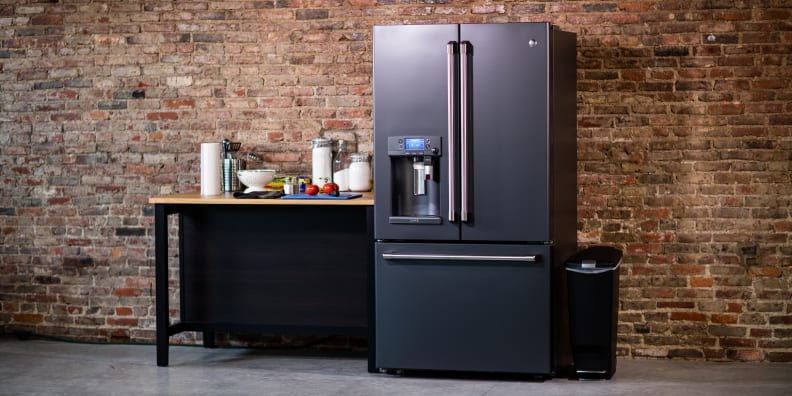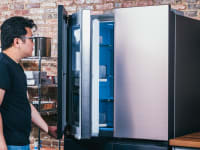How cold should your refrigerator be? Read this
Spoiler alert: It should be below 40°F
Products are chosen independently by our editors. Purchases made through our links may earn us a commission.
To keep our food safe, a refrigerator has to be cold—this part is obvious. What might not be as obvious are the many ways in which your fridge can make you think it’s cold enough when, really, it isn’t.
But let’s start with the basics: How cold is a refrigerator? Well, that depends on how you use it, what you set the temperature to, and how consistently the refrigerator is able to maintain that temperature.
How cold should a refrigerator be?

Try to keep your fridge at 37°F and your freezer at 0°F, which may be difficult if your fridge uses abstract temperature controls.
To keep food out of “the danger zone,” your refrigerator’s temperature needs to remain below 40°F and above 32°F.
According to the CDC and FDA, refrigerators should never be at a temperature above 40°F. This will reduce the chance of spoilage and food-borne illness (we'll get into this later). Likewise, temperatures need to be kept above 32°F to ensure items don't freeze. In all, that's just an 8°F fridge temperature range—not a whole lot of wiggle room to work with.
The ideal refrigerator temperature is 37°F. That's close to the middle of the safe range, which should ensure your food avoids both freezing and spoiling. The padding on either end is necessary, because most refrigerators aren't able to keep temperatures perfectly stable.
The freezer should be at or below 0°F to ensure frozen food stays frozen and helps mitigate freezer burn.
If your fridge and freezer are regularly warmer than those temperatures, you’re risking faster spoilage, and, frankly, potential for food poisoning.
Which part of the fridge is coldest?
In general the coldest part of the fridge is usually the back of the bottom shelf, as cold air tends to sink and warmer air tends to rise.
This may not apply in every case, as some fridges have multiple vents for cold air, or they may use different technology to circulate cold air throughout the compartment.
This is why it’s so important to test your refrigerator’s temperatures yourself.
Conversely, the warmest part of the fridge is the refrigerator door. This is because, when the fridge is open, items stored on the door are surrounded by room temperature air, rather than the cold air inside the fridge. We recommend keeping less perishable items stored here, like drinks, dressings, or butter.
Refrigerator temperatures are rarely consistent over time
Refrigerator temperatures can be inconsistent in a few ways. To start, all refrigerators idle at times, which allows their temperatures to increase. Normally your fridge will automatically kick back on again once the temperature wanders too high, but that threshold depends on how you’ve calibrated the fridge.
Additionally, different parts of your refrigerator can have different temperatures. Most fridges have one vent in the top center of the back of the fridge, and all the cold air that circulates throughout your fridge comes through there. Depending on how that vent is angled (and how the interior of the fridge is designed with regard to air flow), you will likely get warmer-than-average temperatures at either the top or bottom of the fridge.
Finally, of course, comes the temperature variance caused by normal use: opening and closing the fridge door throughout the day. Opening your fridge or freezer door lets out all the cold air your refrigerator has been working to maintain, sending it into overdrive to try to cool everything down again.
And here is why temperature inconsistencies matter
Bacteria proliferates quickly at temperatures over 40°F. That means every part of your fridge needs to be below 40°F—even that spot at the top of your fridge that runs a bit warmer than the rest.
Likewise, consistent temperatures are important in your freezer. If the temperature wanders above 0°F, it means your food isn’t being properly frozen and will spoil sooner. If the temperatures in your freezer bounce around too much throughout the day, due to frequent use or the freezer’s own defrost cycles, that can exacerbate the process of freezer burn as the cycle of defrosting and refreezing gradually extracts all the moisture from your food.
Knowing these risks, how do you properly calibrate your fridge to avoid these pitfalls? Even newer refrigerators with digital displays aren’t always completely accurate, and most refrigerators use more abstract controls such as a dial with the numbers one through 10.
Luckily, now that you know what the ideal temperature should be, you can spot check each compartment to ensure consistently cool temperatures throughout and keep bacteria at bay.
Test your fridge's temperature with a refrigerator thermometer

When in doubt, buy a refrigerator thermometer.
To ensure your fridge and freezer are running at the correct temperatures, purchase a refrigerator thermometer or appliance thermometer. It’s a small investment, and although it's not quite as accurate as the thermocouples we use in our labs, it's close enough and can save you from a nasty stomach bug.
To use, place the thermometer in a cup of water. Why? Your refrigerator measures the temperature of the air around your food, but as we’ve said, your fridge takes breaks throughout the day (and people keep opening the door), which can result in the ambient air temperatures fluctuating quite a lot.
Instead, you want to simulate the temperature inside your food, which is much slower to change its temperature. Check the thermometer after 24 hours in both the fridge and the freezer. Then, adjust the temperature of each based on the results.
Next, use the thermometer to find out where the cold spots are in the refrigerator and freezer by repeating the test in separate corners and at the top, middle, and bottom of the door bins.
The door bins are especially important to keep an eye on as they’re often the least-cool spot in your fridge. Items stored on the door are more frequently exposed to warm air when opening and closing the door, and they’re surrounded by fewer other items that help retain the cold temperatures.
Yes, there are refrigerators that keep more consistent temperatures than others

Every refrigerator is different and would require personally testing thousands of different models. Don’t worry: We’ve done a lot of that work for you.
At Reviewed, hundreds of fridges have passed through our testing labs. We place temperature sensors inside each fridge we test.
Models like the Frigidaire Gallery GRQC2255BF, Bosch B36CD50SNS, GE GDE25EYKFS, and Samsung Bespoke RS28CB760012 do really well at holding the correct temperature. That's why all four models sit at the top of our guide to the best refrigerators you can buy.
How to keep your refrigerator cold
Helping your perishables stay fresh doesn’t end with proper calibration.
First off, don’t open the door more often than necessary. Make sure to keep things organized so they’re quick and easy to retrieve—no more browsing for snacks with the door open. Also, don't store perishables like eggs and milk in the door, because this it the warmest part of your fridge.
Make sure the gasket is in good shape, and seals tightly. If you can open the door with one finger, your seal isn't tight enough. A leaky seal is, at best, an energy waster. At worst, it may ruin your food’s shelf life.
Proper air circulation is vital to your fridge maintaining consistent temperatures, so don’t block the fridge’s air vents. If the cold air is dammed up and can’t circulate properly, it can lead to significant temperature differences throughout the fridge.
Dust off your refrigerator's cooling coils if they're visible. You can use a long, skinny brush or your vacuum cleaner's longest, narrowest attachment to make this job quick and easy. Dusty coils won’t be able to radiate heat properly, which can hinder your fridge’s performance and creates undue stress on the system, causing it to wear down more quickly over time.
Oddly enough, make sure to stock your fridge full. Why? Because, cold air will rush out every time you open the door. It’s the objects in your fridge that help retain the cold and allow your fridge to quickly compensate for the warm air without temperatures rising too much. Just make sure you’re leaving enough room for air to circulate.
More on refrigerators
- The Best Refrigerators We've Tested
- Refrigerator power outage tip: Put a quarter on a cup
- The surprising perks of bottom-freezer refrigerators
- What fridge style fits you best? Read this before you buy
- The Best French-Door Refrigerators We've Tested
- 4 best garage refrigerators to store extra drinks and food
- How we test refrigerators in the Reviewed test labs
- The Best Side-by-side Refrigerators We've Tested
- The Best Top-Freezer Refrigerators We've Tested
- The Best Counter-Depth Refrigerators We've Tested
The product experts at Reviewed have all your shopping needs covered. Follow Reviewed on Facebook, Twitter, Instagram, TikTok, or Flipboard for the latest deals, product reviews, and more.
Prices were accurate at the time this article was published but may change over time.

